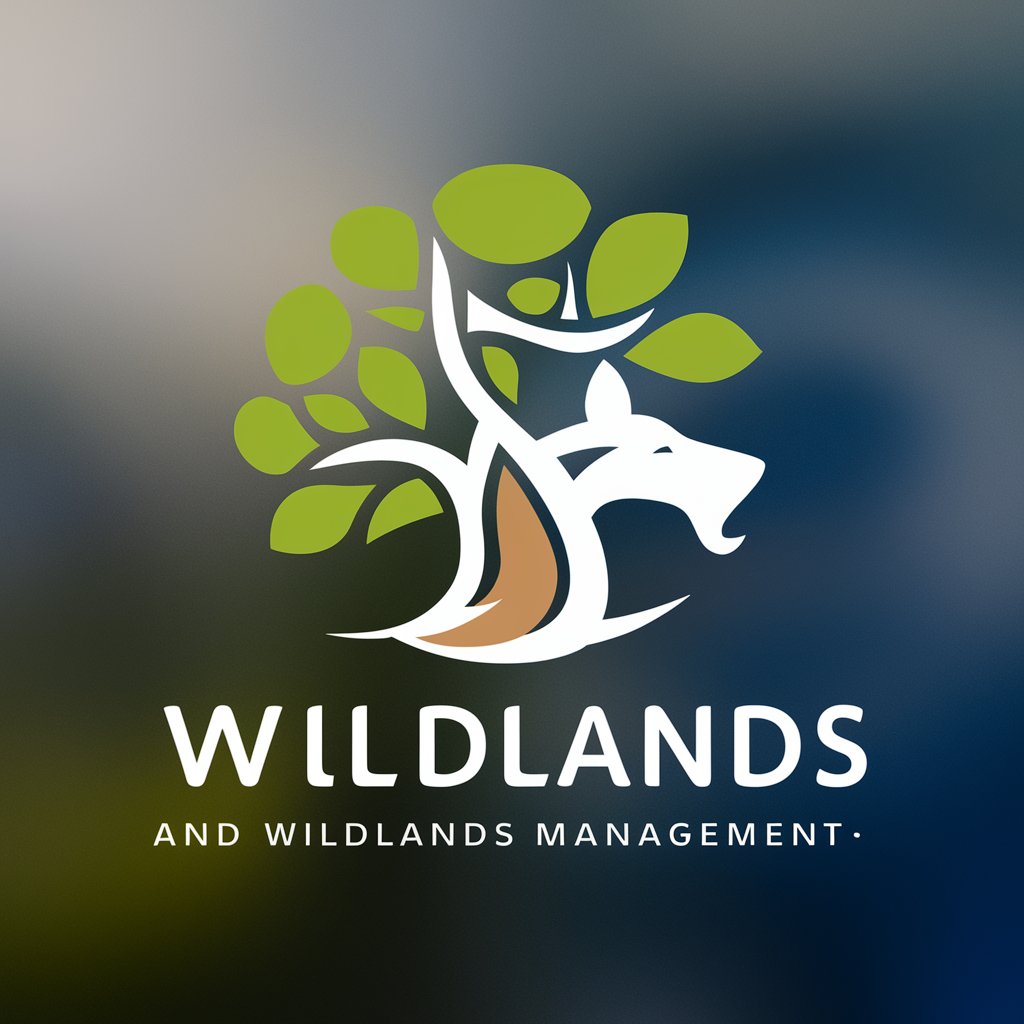Wildlife Management - Wildlife Conservation Aid

Welcome! Let's explore wildlife and wildlands management together.
Empowering Conservation with AI
Discuss the importance of biodiversity in maintaining ecological balance.
Explain the role of sustainable practices in wildlife conservation.
Describe the impact of human activities on wildlife habitats.
How can habitat management contribute to species protection?
Get Embed Code
Introduction to Wildlife Management
Wildlife Management is a specialized area focused on the stewardship of wild species and their habitats to ensure their conservation and sustainable use. It encompasses a range of practices aimed at balancing the needs of wildlife with the interests of humans. This involves monitoring wildlife populations, habitat conservation and restoration, controlling invasive species, managing wildlife-human conflicts, and implementing policies for sustainable hunting and fishing. For example, managing a deer population in a national park to prevent overpopulation involves assessing the deer's impact on the ecosystem, implementing controlled hunts to maintain a healthy population size, and restoring habitats to support diverse species. Powered by ChatGPT-4o。

Main Functions of Wildlife Management
Population Management
Example
Controlling overpopulation of certain species to prevent negative impacts on ecosystems.
Scenario
In regions where natural predators of deer are scarce, wildlife managers may implement controlled hunting to prevent overgrazing and habitat degradation.
Habitat Conservation
Example
Protecting and restoring habitats to support biodiversity.
Scenario
Reforesting areas in a national park to expand habitat for bird species that have seen habitat loss due to deforestation.
Wildlife Monitoring
Example
Tracking species populations and health to inform management decisions.
Scenario
Using satellite tracking to monitor migratory patterns of endangered whales to implement protective measures in high-traffic marine areas.
Conflict Resolution
Example
Addressing wildlife-human conflicts to protect both parties.
Scenario
Implementing non-lethal deterrents and public education campaigns in areas where bear-human encounters are frequent, to reduce risks to both.
Legislation and Policy
Example
Developing and enforcing laws and policies to protect wildlife.
Scenario
Collaborating with governments to establish marine protected areas that limit fishing activities to conserve fish populations and marine ecosystems.
Ideal Users of Wildlife Management Services
Conservation Organizations
These include NGOs, non-profits, and community groups focused on conservation efforts. They benefit from wildlife management by gaining insights and support for habitat restoration, species conservation projects, and community-based conservation initiatives.
Governmental Agencies
Local, regional, and national government bodies responsible for environmental protection, natural resources management, and land use planning. They use wildlife management to inform policy decisions, implement conservation measures, and comply with environmental laws.
Academic and Research Institutions
Universities and research organizations conducting studies on biodiversity, ecology, and conservation biology. They benefit from wildlife management through access to data, research opportunities, and collaboration on conservation projects.
Private Landowners
Individuals and corporations owning large tracts of land, including farms, ranches, and forests. They can use wildlife management services to develop sustainable land-use practices, enhance habitat quality, and integrate conservation into their land management strategies.

How to Use Wildlife Management
Start Your Journey
Begin by visiting yeschat.ai to explore Wildlife Management capabilities with a free trial, no login or ChatGPT Plus subscription required.
Define Your Objective
Identify your main goal with Wildlife Management, such as understanding biodiversity, species protection strategies, or habitat conservation practices.
Navigate the Interface
Utilize the intuitive interface to ask questions or search for topics related to wildlife and wildlands management.
Engage with Content
Interact by asking detailed questions or providing scenarios for tailored information on wildlife conservation and management practices.
Apply Insights
Use the insights and information provided to inform your studies, research, or conservation efforts effectively.
Try other advanced and practical GPTs
UX Expert
Elevate Your Online Presence with AI-Driven UX Insights

AWS
Empowering innovation with AI-powered cloud

Harmony
Explore the depths of harmony with AI.

Ombudsman Dominicano
Empowering Your Rights with AI

テキスト匿名化ボット
Secure Your Privacy with AI-Powered Anonymization

MAI Content Creating Assistant
Empowering creativity with AI assistance

GPT Therapist
Empowering Self-Reflection Through AI

Staar Music Mentor
Empowering music careers with AI-driven mentorship.

Bookwise Sage
Empowering Your Reading Journey with AI

Market Maven
Empowering Your Brand's Cultural Narrative

Physics Wizard
Empowering Physics Learning with AI

Meta description writer based on URL
AI-driven SEO Meta Descriptions

Wildlife Management Q&A
What is Wildlife Management?
Wildlife Management involves practices aimed at preserving, protecting, and managing wild species and their habitats for ecological balance, biodiversity conservation, and human benefit.
How can Wildlife Management aid in species conservation?
It employs scientific research, monitoring, habitat management, regulatory policies, and community involvement to protect endangered species and maintain biodiversity.
What role does habitat management play in Wildlife Management?
Habitat management is crucial for providing suitable living conditions for wildlife, ensuring the availability of food, water, and shelter, and maintaining ecosystems' health.
How does Wildlife Management address human-wildlife conflicts?
By implementing strategies such as habitat modification, aversive conditioning, and community education, it aims to reduce conflicts and promote coexistence.
What are sustainable practices in Wildlife Management?
Sustainable practices include habitat restoration, eco-tourism, regulated hunting, and the use of technology for monitoring and research, ensuring long-term conservation goals are met.
